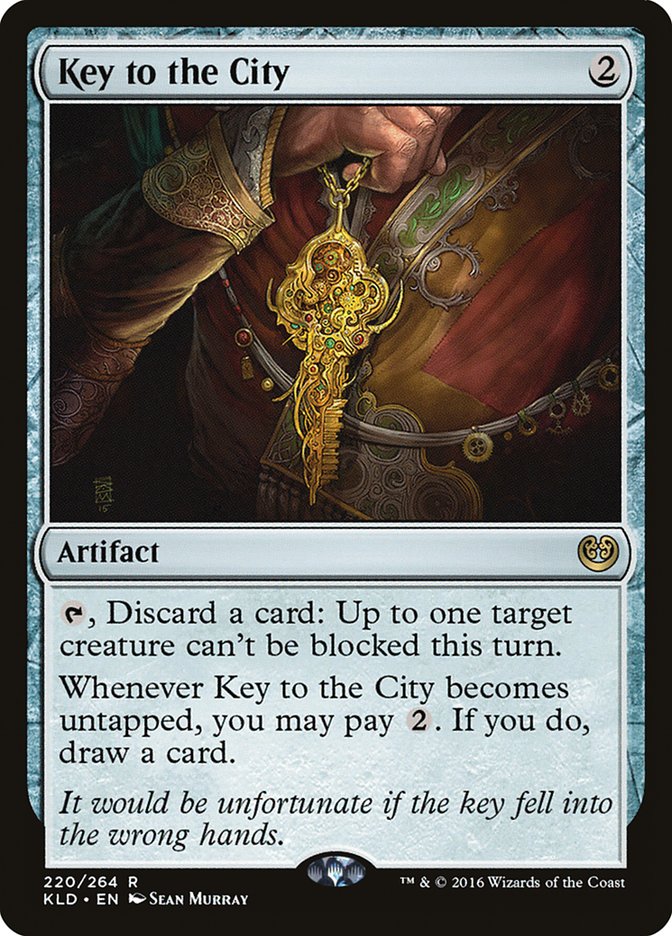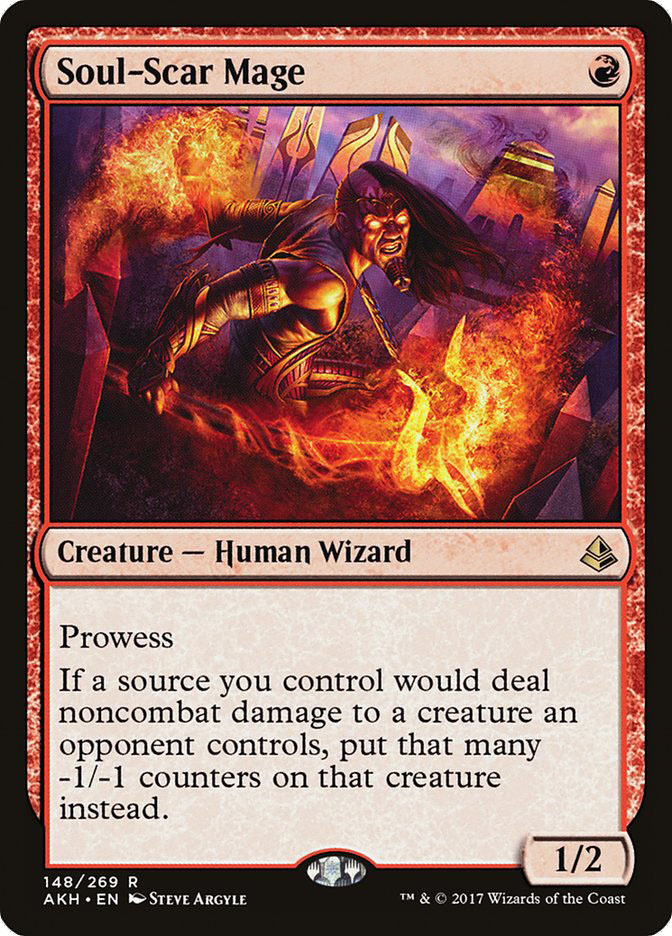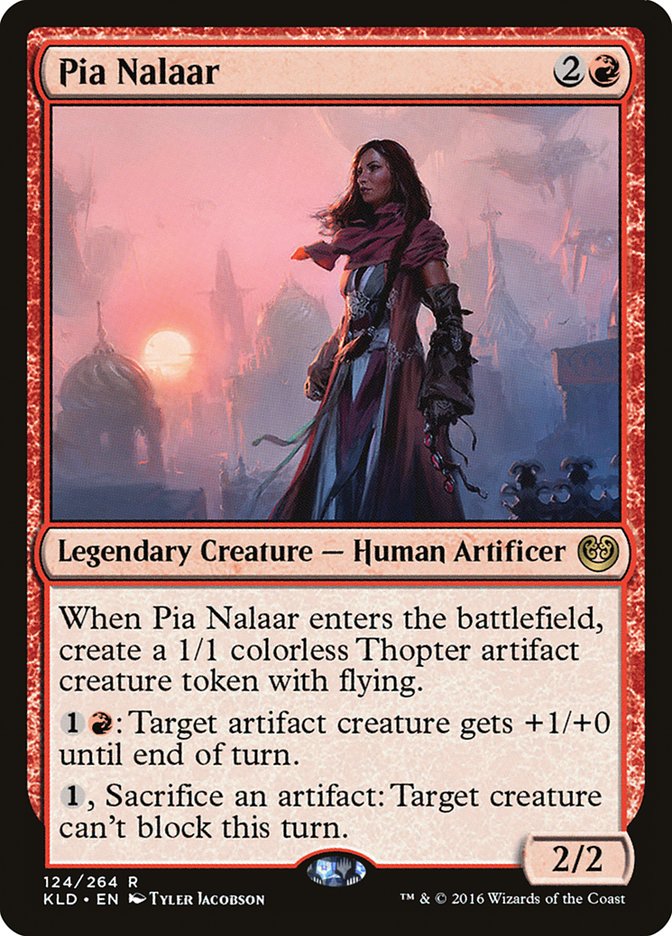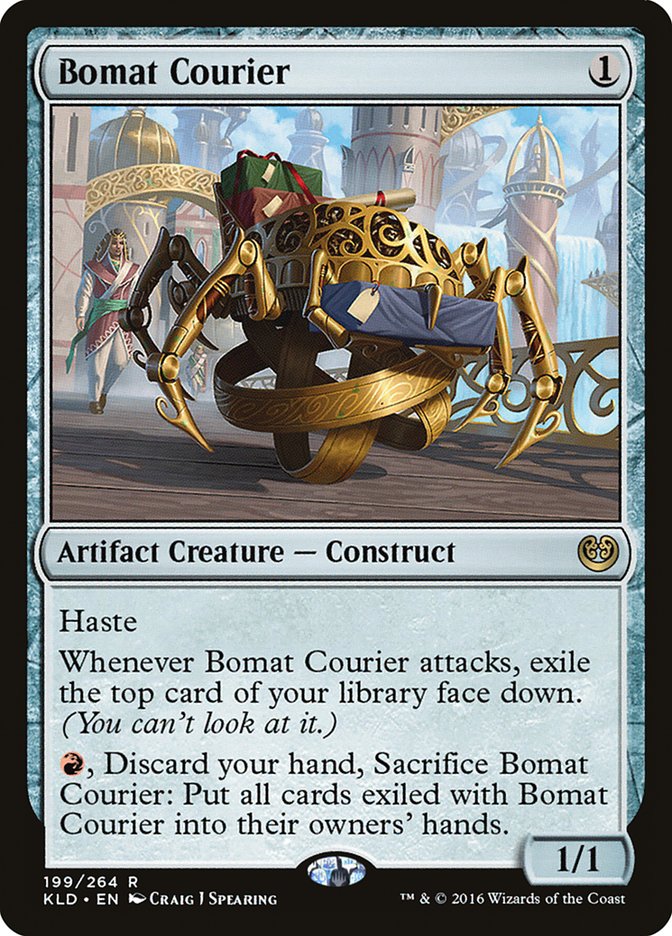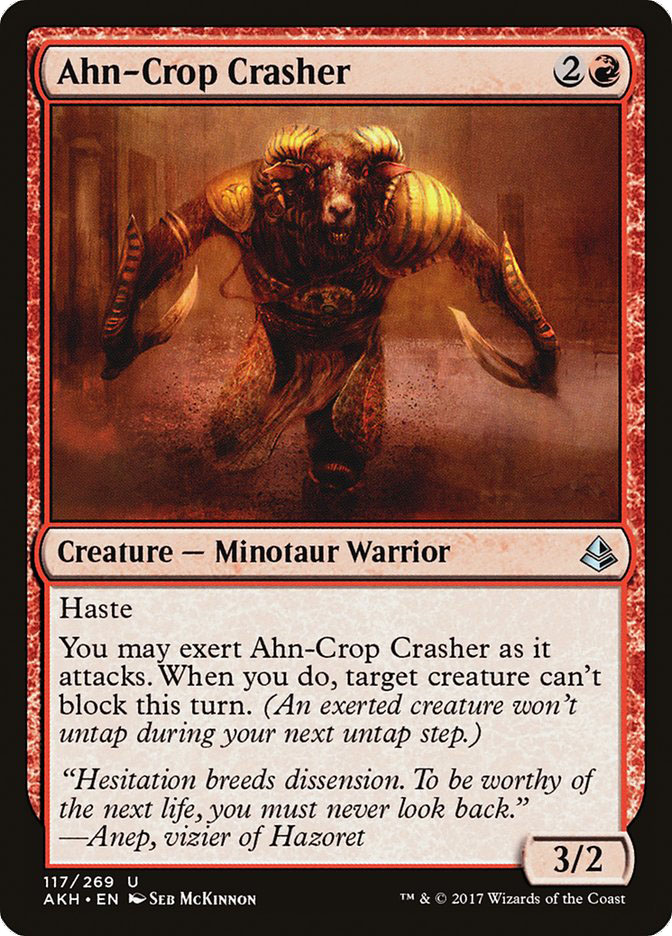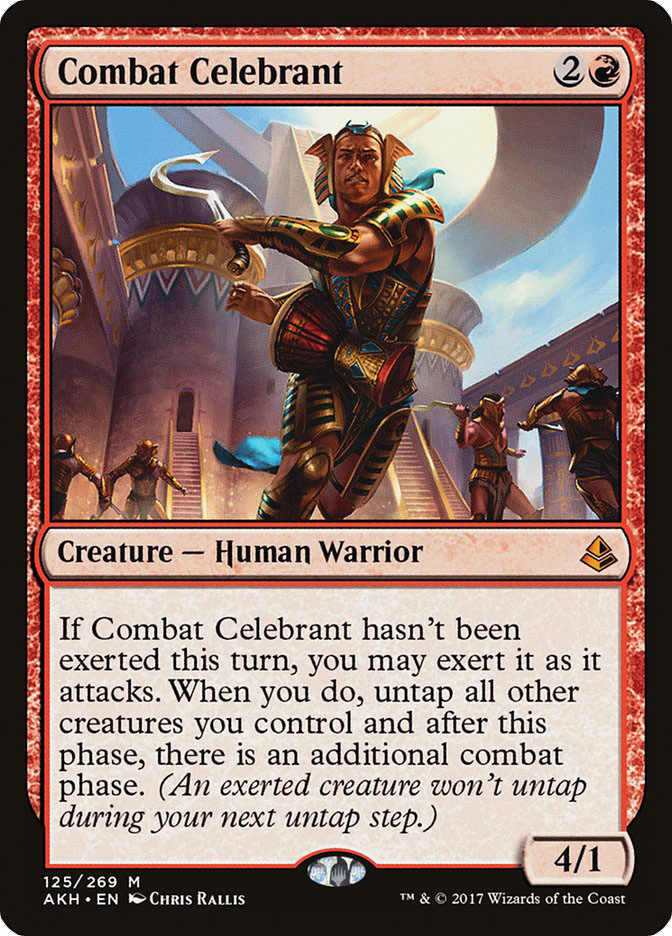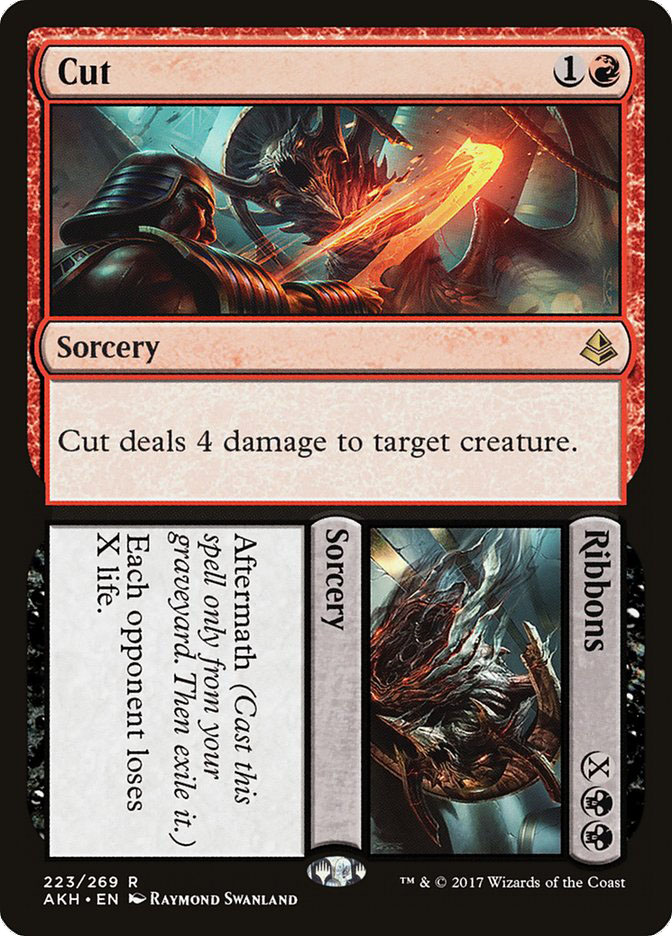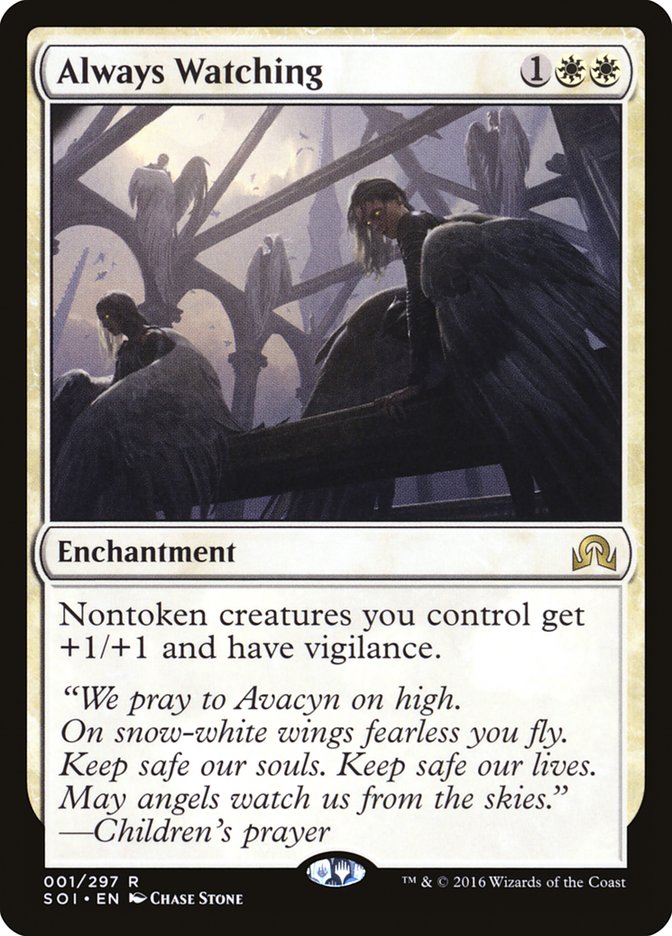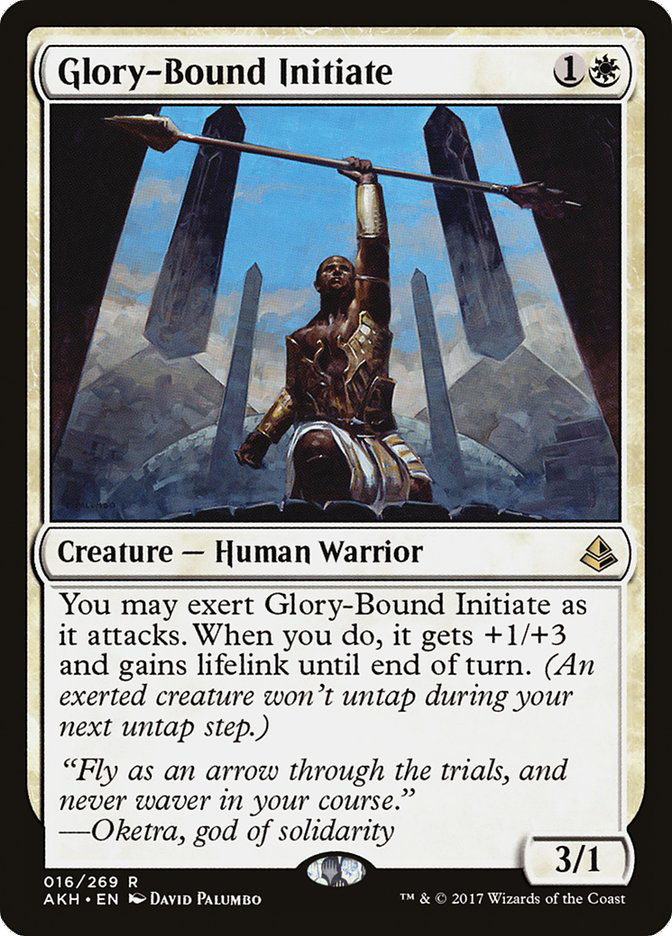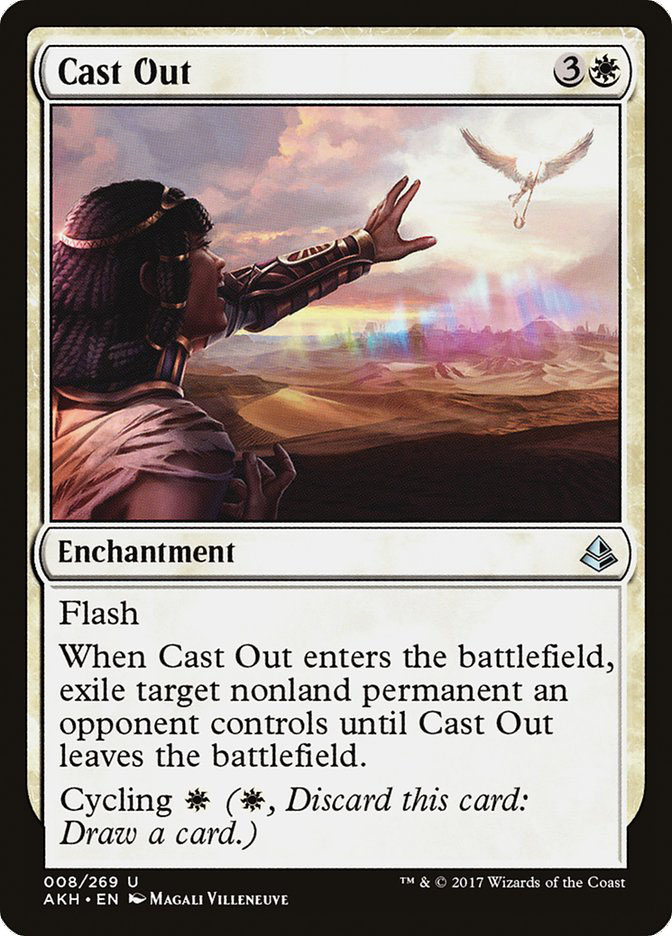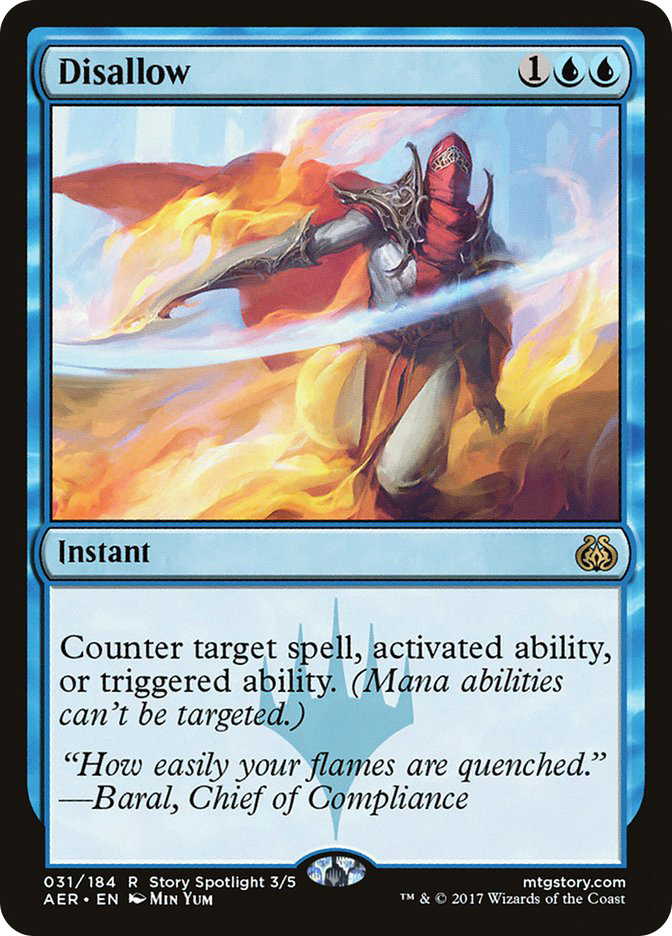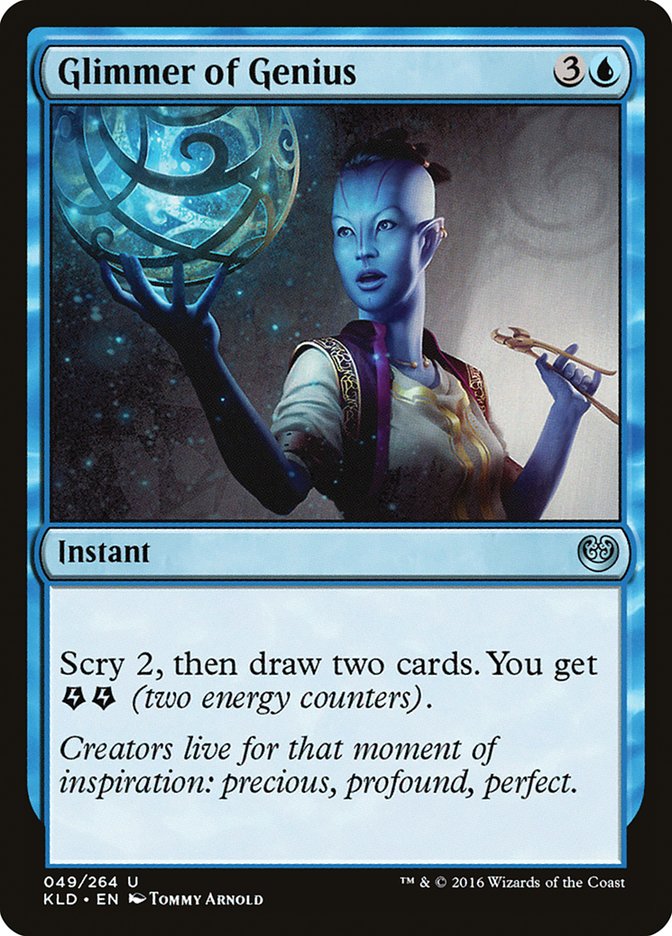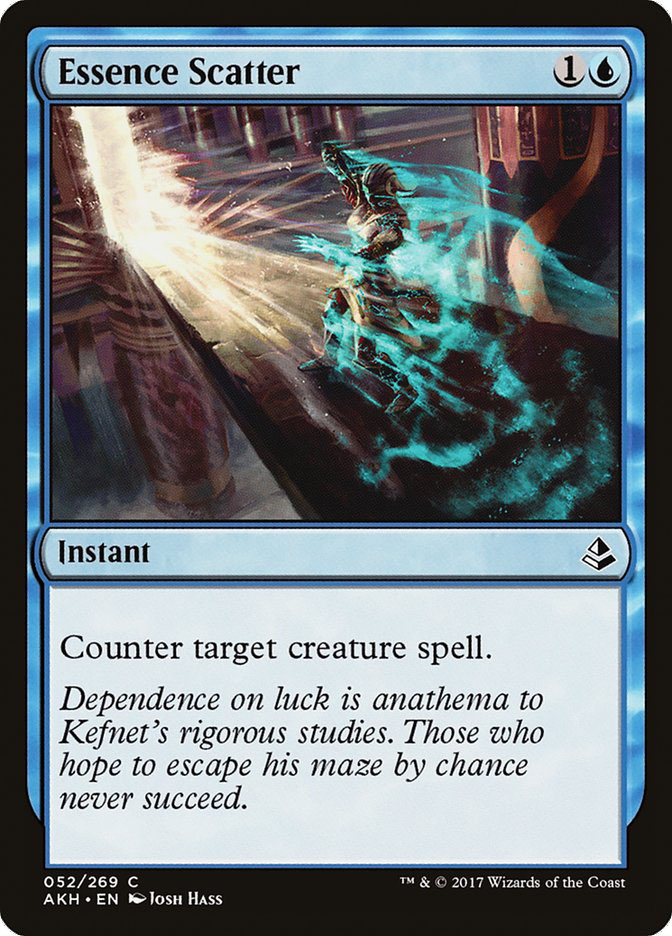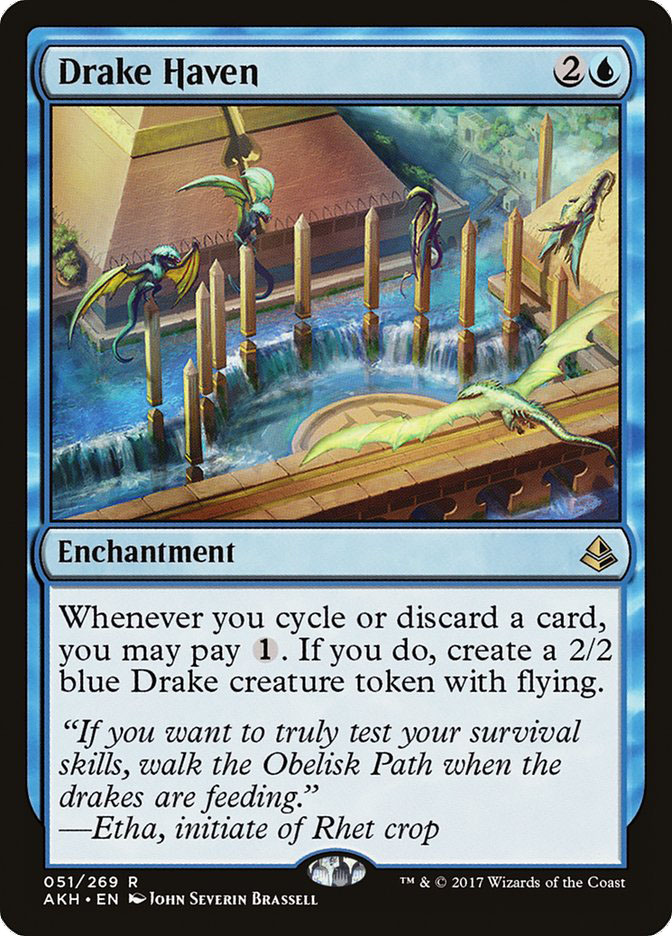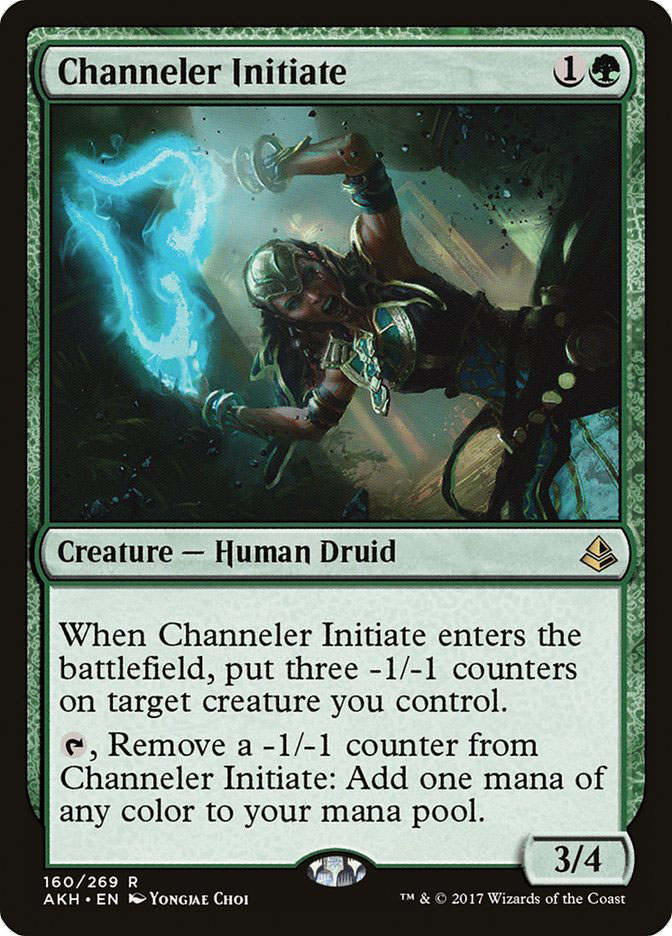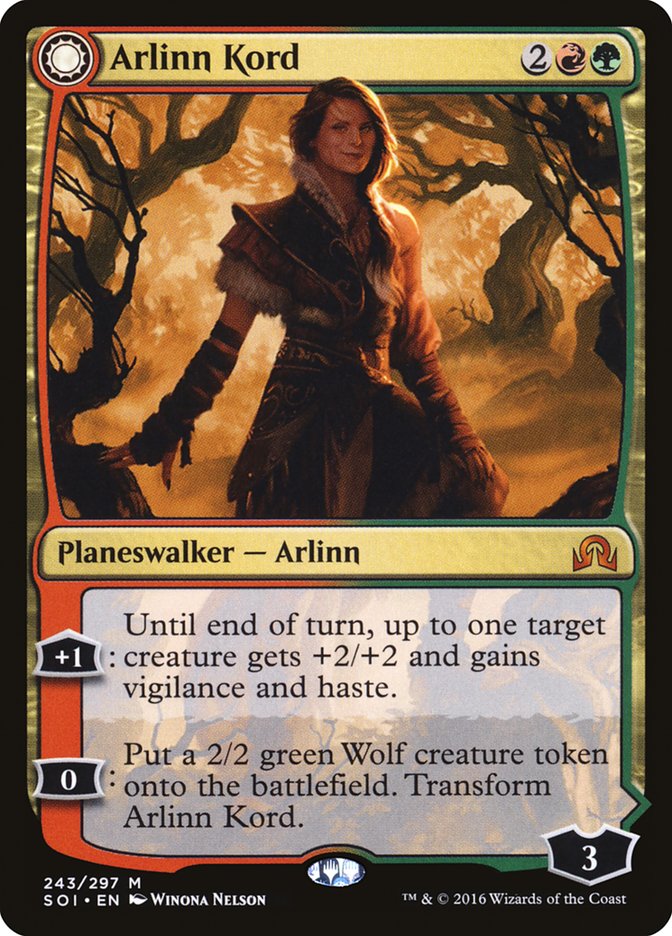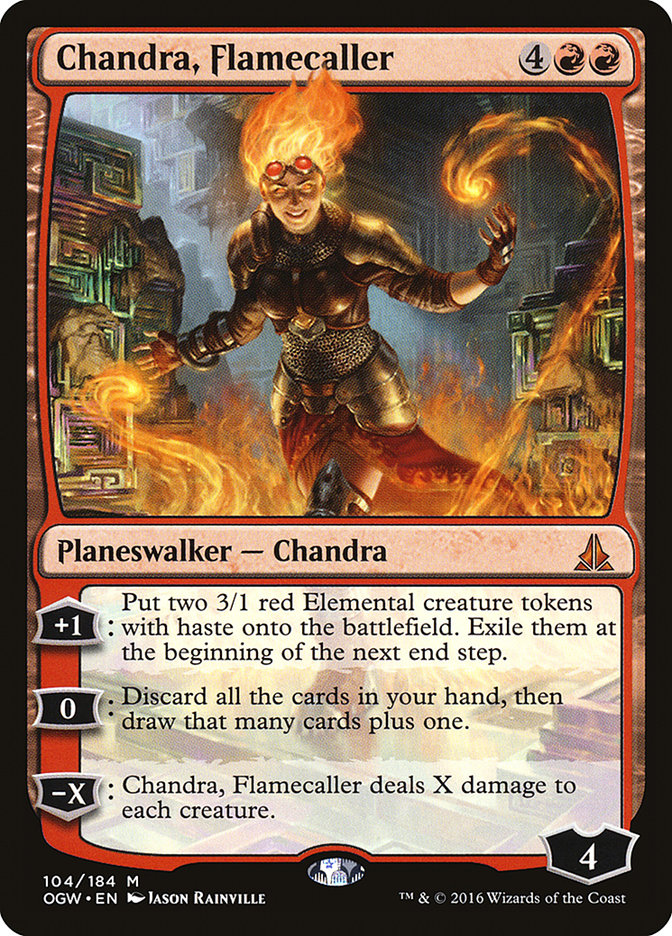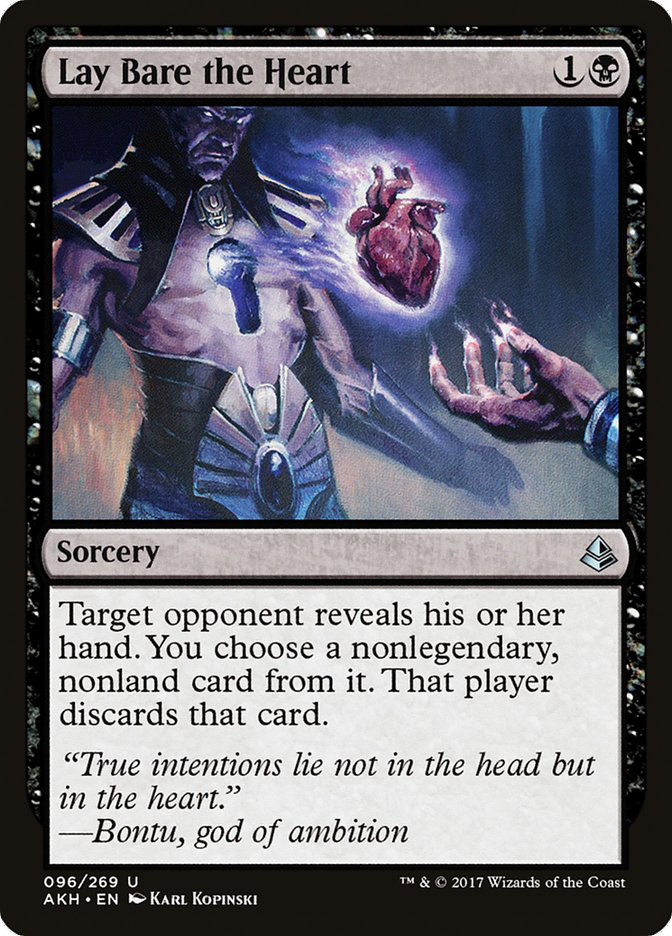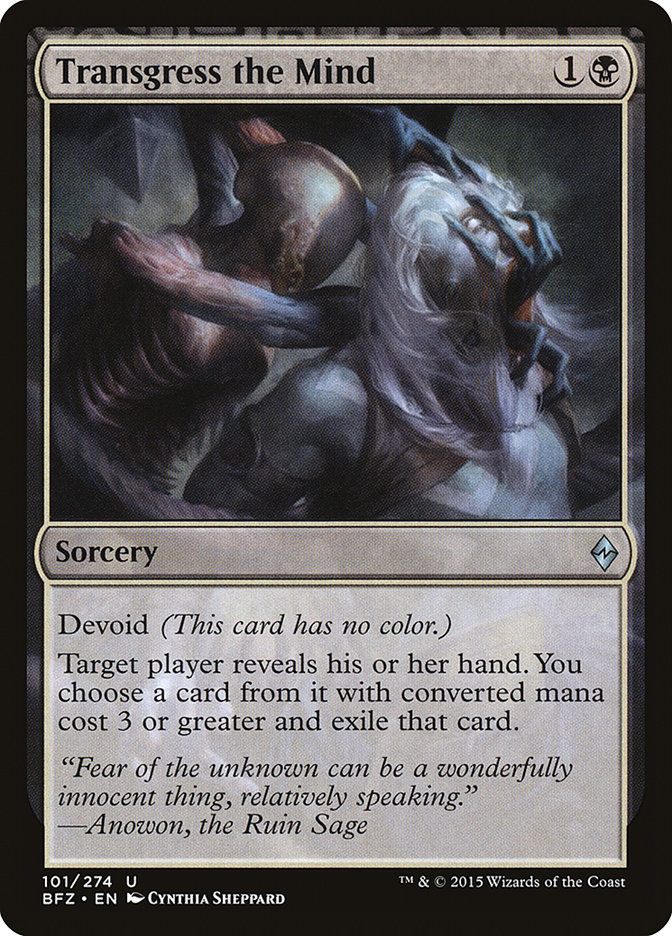It’s the middle of preview season, and that means only one thing: everyone is busy brewing decks with cards from the latest set, in this case Amonkhet. Lastweek, I went over various cards I like and don’t like, foregoing any decklists because we didn’t have enough cards from the set to make the venture worthwhile. This week we have enough cards to start making a stab at actual decks, with the implied caveat that everything will change once someone discovers a format-warping infinite combo. So remember, all predictions are 100% guaranteed to be incorrect.
With that said, these are the five decks that immediately popped into my head as having the best chance at competing with the two-headed wreck of Mardu Vehicles and Four-Color Saheeli.
Red Aggro
The question here isn’t “Is there a red aggro deck?” but “What does the red aggro deck look like?” Gerry Thompson provided an excellentoverview about just how deep the available card pool for this archetype is along with the various avenues you can go down to fill out your list in a cohesive way.
For my preferred list, the critical card is Key to the City.*
*Please resist the urge to make a pun here. You’re better than that.
Key to the City provides a much-needed link between the discard/madness cards and the artifact-matters cards. It also happens to be a powerful card in an aggressive deck to begin with, so that was my starting point, eventually arriving at the following list:
Creatures (24)
- 4 Insolent Neonate
- 3 Pia Nalaar
- 4 Bomat Courier
- 4 Scrapheap Scrounger
- 4 Inventor's Apprentice
- 1 Ahn-Crop Crasher
- 4 Flameblade Adept
Lands (21)
Spells (15)

I’m nearly maxing out on one-drops here because the deck has so much reach to capitalize on a fast start. The notable missing card is Soul-Scar Mage, which has a lot of interesting text but doesn’t fit with the rest of the deck. The goal here is to make blocking as difficult as possible for the opponent, so Soul-Scar Mage’s ability will only come up with Fiery Temper when things are going well.
Shrinking a large creature will be great in a race, but it’s not enough to get it into the deck over the other options, all of which synergize with the deck.
Our goal is making blocking difficult, with enough artifacts to make Inventor’s Apprentice a solid one-drop, and enough discard outlets to make Flameblade Adept a 2/2 or better much of the time. That means Pia Nalaar is an obvious choice, as is Bomat Courier.
The latter is underpowered for sure, but it’s great when you can force it through with Key to the City, eventually sacrificing it to pump a Flameblade Adept or two, leading to a huge attack.
The more curious addition here is Consuming Fervor, but it works beautifully with many cards here. You can put it on Bomat Courier early so it can attack a few times and then you can sacrifice it before it dies to -1/-1 counters. You can put it on Insolent Neonate for the same effect. Scrapheap Scrounger comes back after it dies and Pia Nalaar’s Thopter token can be sacrificed for value to her ability after a few large attacks.
And in the meantime, you get six extra damage for one mana, all of which will be difficult to block because all your creatures have menace or are unblockable from Key to the City. Even if you’re forced to enchant an Inventor’s Apprentice or Flameblade Adept, the extra damage output should end the game before your creature dying is relevant.
The last addition to the maindeck is Ahn-Crop Crasher, which I wanted badly to be Combat Celebrant, but I simply couldn’t justify the latter.
Combat Celebrant has a very powerful, flashy ability, where Ahn-Crop Crasher is good but unexciting. The thing about red aggro is that it typically doesn’t go for flash. It wants the card that will consistently get the job done. Dealing twenty damage 80% of the time is better than dealing 30 damage 50% of the time, and Ahn-Crop Crasher replaces the fourth Pia Nalaar so you don’t flood on legendary creatures while continuing the “make blocking difficult” bent of the deck.
All of the sideboards in these lists are speculative, given that we’re moving into an unknown format, but there are some nice plans here. The two cards I want to highlight are Throne of the God-Pharaoh and Cut//Ribbons.
The former is card I’m very interested in but haven’t found a great home for. It fights too much with Key to the City for the maindeck, but against creature-light decks that aren’t planning on blocking much anyway, you can swap the two and gain another powerful threat. Cut//Ribbons is a fine removal spell but wouldn’t make the cut without the back-end burn spell that, while difficult to cast with only twelve black sources, it a great source of inevitability against anyone who plays very conservatively. And with the many discard outlets, it’s easy to surprise your opponent with three to four points of burn they weren’t expecting.
Split cards are easy to underrate because the tendency is to evaluate each half as an individual card, but there’s value in having access to both, especially in a deck that wants to discard cards aggressively. I’ll be trying any Aftermath card that looks remotely playable and I suggest you do the same.
Human Aggro
The synergy between Always Watching and Exert was obvious from the start, but the early Exert creatures, notably Glorybringer, didn’t play particularly well in an Always Watching deck. When you’re paying three mana for an Anthem effect, you want to have a lot of one- and two-mana creatures to get an immediate payoff, so I had been looking for a cheap white creature with Exert to take advantage of that synergy. Glory-Bound Initiate was a lot more than I expected.
The body by itself is serviceable for Constructed. (Keep in mind that I’m someone who registered Daring Skyjek at an Open.) If you think of it as a 4/4 lifelink creature that attacks every other turn, you’re doing better than a 2/2 with lifelink, since your attacks are front-loaded, and the option of Exerting means you’re doing better than that.
But with Always Watching, you have a 5/5 lifelinker attacking on turn 3. I don’t think I have to explain that one.
Of course, the natural home for this is Humans:
Creatures (25)
- 4 Expedition Envoy
- 4 Thraben Inspector
- 4 Thalia's Lieutenant
- 4 Town Gossipmonger
- 3 Thalia, Heretic Cathar
- 2 Metallic Mimic
- 4 Glory-Bound Initiate
Planeswalkers (3)
Lands (22)
- 21 Plains
- 1 Westvale Abbey
Spells (10)

There’s not too much to talk about here, as all the creatures here are familiar from the old lists of Humans, with an additional lord in Metallic Mimic. You do gain access to Cast Out, which is nice, since you can now play more removal than you would’ve otherwise without getting too punished for it. I’d cycle Cast Out aggressively unless my curve is great or my opponent is playing the Felidar Guardian combo because coming out quickly is very important here.
I am a little worried about the curve here. The old Humans decks played around twenty one-drops and we simply can’t match that with what’s available in current Standard. Another good one-drop would go a long way toward bolstering this deck, as I’d happily cut the sometimes powerful but ultimately underwhelming Metallic Mimics and trim the curve down to maximize Always Watching.
If no such one-drop appears, this deck could perhaps splash another color, as Tom Ross did with green in his most recentarticle. His list is a different style of aggro deck, but Heron’s Grace Champion is great in creature mirrors and you’d gain access to a cycling land and better sideboard options.
As is, the best card in this deck’s sideboard is Dusk//Dawn, which is excellent against any Winding Constrictor deck. Whether the Snake survives in a format with yet another great Golgari two-drop remains to be seen, but there’s no way we have a Standard format where people aren’t playing efficient creatures that you can kill while leaving most of yours intact.
U/W Control
I’m changing pace with this next list. Even though I rarely play control, a recent preview has piqued my interest. We all know Cast Out is a great removal spell, and having a catch-all is great, but in my estimation the greatest issue control decks have had in this format is how they respond to their opponent on turn 2. For example, watch my latest VersusVideo with Todd Anderson. Todd has an answer in his deck for all my threats, but nearly every game he’s caught with the wrong one on turn 2, at which point he’s forced to react from behind and I’m easily able to keep applying pressure and sequence in a way that leaves him with dead counterspells in his hand that he never had a chance to use.
If his deck had a catch all on turn 2, then he could’ve cast Disallow on turn 3 and so on, matching up his answers against my threats in a way that is much more profitable. Enter Censor. Given that we recently had a fake Miscalculation circulating online, this latest conditional counterspell may read as a letdown, but I think it’s exactly what control decks were looking for. When cycling was revealed as a mechanic in Amonkhet, I wroteabouthowthemechanicismosteffectiveonnarrowlypowerfuleffects, and it doesn’t get much more narrowly powerful than Force Spike. If your opponent doesn’t do anything you care about or you draw the card later when they have plenty of mana, it cycles away, but when you need it to, it counters Winding Constrictor or Heart of Kiran on turn 2 and Felidar Guardian or Gideon, Ally of Zendikar on turn 4.
The threat of Censor also creates a powerful incentive for your opponent to play off-curve, which is incredibly beneficial for a control player. If your opponent doesn’t cast their Gideon, Ally of Zendikar on turn 4, you are free to cast Glimmer of Genius or cycle some cards to better set yourself up to answer the next wave of threats.
A lot of my colleagues have written about the potential of Drake Haven, and Censor is yet another card that adds to your cycling suite. I had been skeptical of the enchantment, but with a high enough density of cycling cards, especially those that cycle for one, it’s going to be good. With fewer cards available to them, MichaelMajors and JimDavis built control lists that are three colors, but I think there’s enough here to play a cleaner manabase without losing anything important. Add four copies of Censor to this list:
Creatures (3)
Lands (27)
Spells (26)

This list has eighteen cycling cards, eight of which cycle for one mana. Still, you don’t want to flood early on Drake Havens so I like trimming to three copies. Notably, the new instant-speed draw spell, Pull from Tomorrow, also triggers Drake Haven, essentially trading a card for a 2/2 flier, which is generally beneficial.
Pull from Tomorrow is definitely a powerful addition for any control deck, especially one that wants to operate at instant speed with counterspells, removal, and Torrential Gearhulk. Once you get above four or five mana, Pull is going to be better than Glimmer of Genius, provided you can sink all of your mana into it, but it notably interacts poorly with Torrential Gearhulk, so we can’t completely abandon the old guard here. Still, you’re going to have games where you draw Pull from Tomorrow while sitting on nine or ten mana and then it’s really close to Sphinx’s Revelation.
I’ve opted for Disallow and Essence Scatter over Void Shatter and Horribly Awry because I think Drake Haven will do a good job of containing Scrapheap Scrounger, either by giving you nearly free ways to trade for it until they run out of creatures to feed to it or by simply racing it. Once I care less about exiling things, the added utility of the other counterspells wins out, but it’s certainly something to think about when testing the deck.
I also like the idea of playing some off-color cycling lands here, since the manabase should be able to withstand the extra enters-the-battlefield-tapped lands and achieving a high density of cycling cards means your Drake Havens are better and you find your answers more reliably. This deck has so much velocity that you’ll be surprised how often you find your singleton Descend Upon the Sinful or the second and third Torrential Gearhulks. Control decks benefited the most from the Temples in Theros block and I expect a similar dynamic from cycling duals.
G/R Aggro
Okay, that’s enough control for one day. Now we get to the midrange-ish part of the spectrum, although I’m starting squarely on the aggressive side of midrange. When it was previewed, Glorybringer was definitely the most exciting card to me, and that hasn’t changed in the last week. Big, flying Dragons have historically played best next to mana acceleration, and Channeler Initiate means we have a second good option on top of Servant of the Conduit.
Channeler Initiate ideally wants to be in black and green with other on-theme cards like Hapatra, Vizier of Poisons, but as of this writing I don’t see enough cards to build around those synergies. Until that point, I’m using Channeler Initiate as a supplementary mana creature and that means moving into red for Glorybringer.
The Gruul colors also give us access to Arlinn Kord, a card that I swore to not be fooled by again, but alas, here we are. Toward the end of my trials and tribulations with the disappointing planeswalker, I learned that its +1 is its best ability, and it just happens to synergize perfectly with Exert, elevating Glorybringer into absurd territory and importantly sizing it above Heart of Kiran and Archangel Avacyn. That brings us to the following list:
Creatures (20)
- 4 Tireless Tracker
- 1 Longtusk Cub
- 4 Voltaic Brawler
- 4 Servant of the Conduit
- 4 Glorybringer
- 3 Channeler Initiate
Planeswalkers (5)
Lands (22)
Spells (13)

The first thing to note is just how much mana is in this deck. Cycling lands encourage you to increase your land count, but with mana creatures and Attune with Aether, there are a full 33 cards devoted to mana in this list, and only four of them cycle. I could add off-color cycling duals like I did in the U/W Control deck, but this list is much more sensitive to lands entering the battlefield tapped.
My compromise is playing the full complement of Tireless Trackers in the maindeck, giving you the best card in the format to capitalize on extra land drops. I’ve also included a singleton copy of Chandra, Flamecaller as a powerful high-end threat when you flood that can also serve to cycle some extra lands for more gas. Still, I could see taking a more midrange approach and replacing the Voltaic Brawlers with Walking Ballistas to give the deck another mana sink.
The rest of the deck falls seamlessly into place from there. The one-mana spells may look odd but they play an important function here. First, Shocking an opposing creature on the draw does a lot for setting up your ramp curves, letting you execute your gameplan without falling too far behind to Toolcraft Exemplar and friends, especially when on the draw. Second, one-mana spells pair perfectly with Tireless Tracker. You can cast a mana creature on turn 2 and curve it into “Tireless Tracker, investigate, kill your creature or Blossoming Defense your removal spell.”
One sideboard consideration that’s notable is the inclusion of Appetite for the Unnatural over more copies of Release the Gremlins and Manglehorn. We’re accustomed to thinking of these effects as Shatters for Mardu Vehicles, but with Cast Out coming into the format, having the true Disenchant is a lot more valuable. I am not planning on bringing them in against Mardu, since the three other such effects should be sufficient.
B/G Delirium
And finally we come to the more controlling end of the midrange spectrum. Without Emrakul, the Promised End to work toward, B/G Delirium was pushed out of the format, but Liliana, Death’s Majesty is a great addition to the deck. It competes with Liliana, the Last Hope, but Death’s Majesty is the much more powerful option; I’d rather play other cheap cards and build toward a five-drop that can take over the game by making an army of Zombies and recurring your Ishkanah, Grafwidows.
Creatures (16)
- 3 Tireless Tracker
- 2 Ishkanah, Grafwidow
- 4 Grim Flayer
- 2 Gonti, Lord of Luxury
- 1 Noxious Gearhulk
- 3 Walking Ballista
- 1 Manglehorn
Planeswalkers (3)
Lands (23)
Spells (18)

This is also the deck that benefits the most from Manglehorn. It’s a great Traverse the Ulvenwald target against Mardu Vehicles while also stopping the Felidar Guardian combo, and you can rebuy it with Liliana, Death’s Majesty and Grapple with the Past.
Against hyper-aggressive decks where Liliana, the Last Hope will be great, I want to swap out the bigger version and lower the curve to boot, so I made some room in the sideboard for a couple of copies.
I don’t know whether Lay Bare the Heart will prove better than Transgress the Mind, but for now I’m testing the new card that is likely more versatile. Other than that, this deck remains largely unchanged from previous iterations. I think, more than any other deck I’ve featured today, this one is dependent on other decks forcing their way into the Mardu Vehicles- and Four-Color Saheeli-dominated metagame. This deck can outmaneuver more linear decks but struggles handling the multi-faceted attack that those two decks have without much of a clock to apply pressure to them.
If we do see a significant shakeup in Standard, and I sure hope we do (hot take alert), then B/G Delirium will be an easy deck to overlook as everyone becomes enamored with the new cards, but simply having its natural predators decline in popularity could help push this once-dominant archetype back into the limelight.
At just over half of the set revealed, we still have a ways to go with preview season. Normally at this point we’ve seen the most exciting cards, but it seems as though WotC is taking a slower approach this time around, so I’m expecting a few more gems to come. As I mentioned earlier, I’d like to see more -1/-1 counter synergies so I can build around Haptra, Vizier of Poisons, potentially with Archfiend of Ifnir and Liliana, Death’s Majesty. Such a deck would operate in a similar space to B/G Delirium, potentially pushing it out of the metagame for good.
By next week, we should have most, if not all, of Amonkhet revealed, which brings with it the worst part of preview season: actually playing with the cards and finding out how wrong you are. Fortunately I think at this point I’m fairly immune to public embarrassment:


